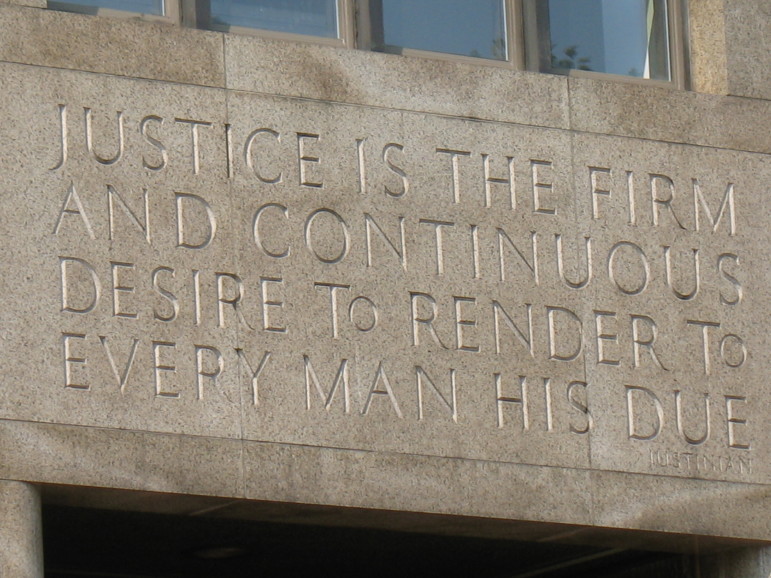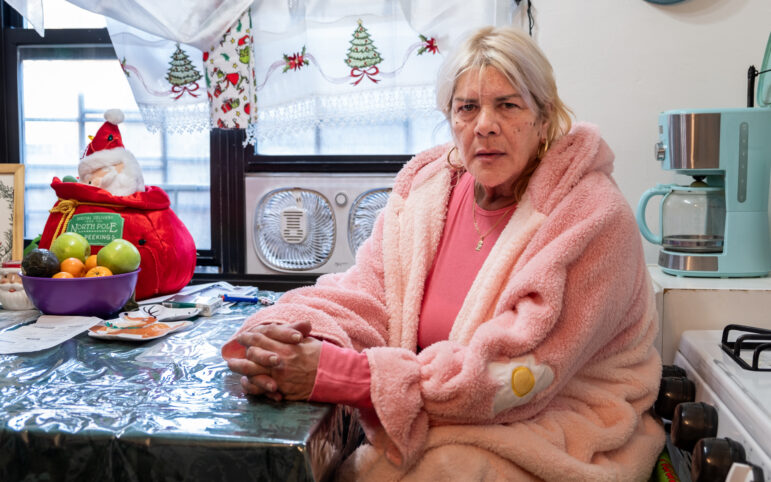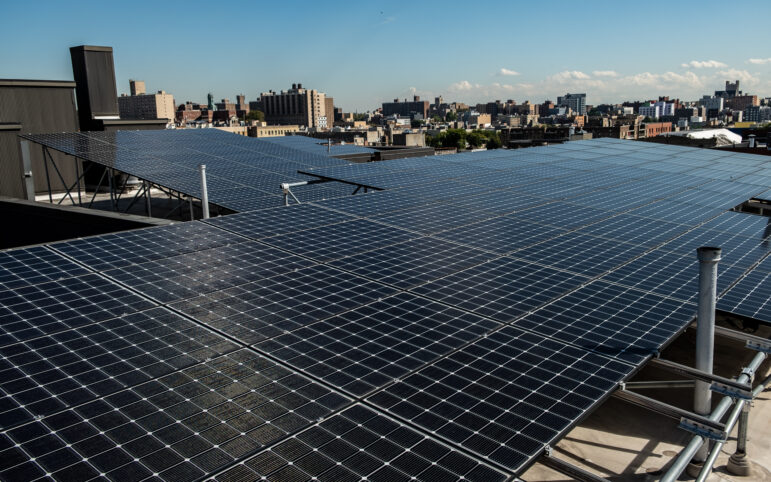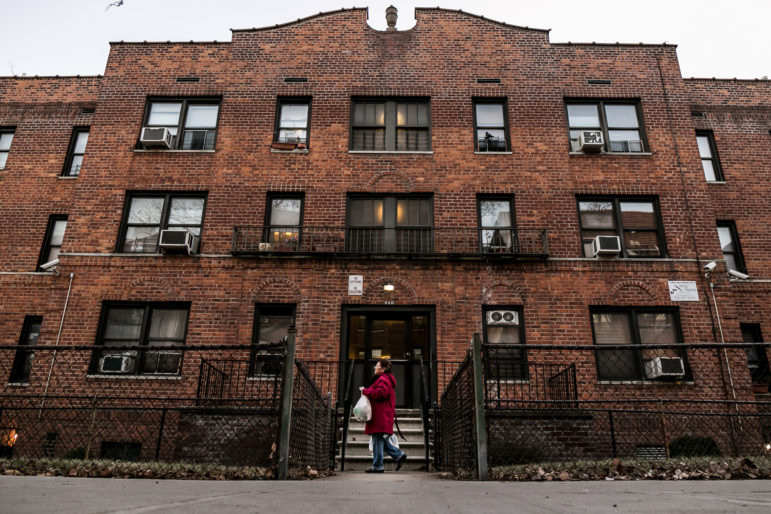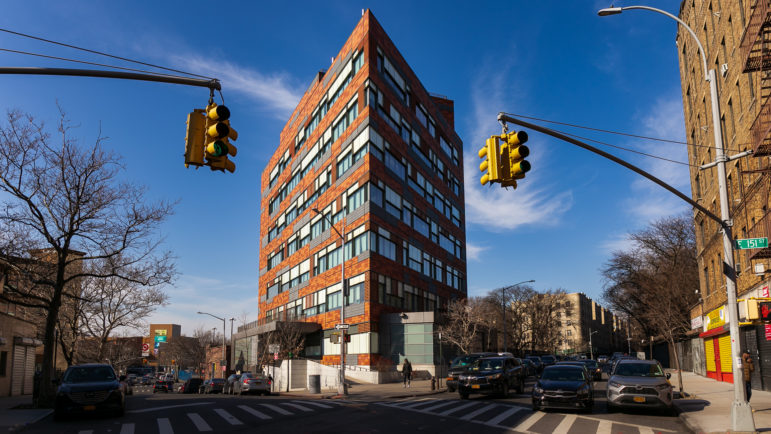
Adi Talwar
Department of Homeless Services’ Prevention Assistance and Temporary Housing (PATH) intake center in the Bronx, located at the intersection of East 151 Street and Walton Avenue.The school year has started to slip away for Kanjella Orr’s four kids.
They live in a shelter in Hunts Point and they haven’t been able to log into their school accounts to complete their classwork since the Department of Education closed schools March 16. The city moved classwork and communication online to stop the spread of COVID-19 Monday.
Orr’s children — a 13-year-old in seventh grade, an 8-year-old in third-grade, a 7-year-old in first grade and a 5-year-old in pre-K— have been doing paper packets inside their Hunts Point family shelter while their mother tries to get them web-enabled devices that connect them with classmates, teachers and assignments.
“I’ve been calling all day. I’m trying not to stress,” Orr says.
The children’s schools gave the family two laptops, Orr says, but the shelter’s brand new WiFi does not reach their unit, rendering the laptops useless for now. Orr says she applied for web-enabled devices, like tablets that use 3G or 4G LTE service, through the DOE website, but she hasn’t heard back. The children’s schools told her they would resubmit the application for tablets, she says.
“Tomorrow I will see if the shelter has a common space downstairs we maybe can sit in to be closer to the WiFi,” Orr says.
The children are a few of the roughly 300,000 public school students who lack devices that would allow them to go online and connect back to school, according to the DOE. The city says it will eventually provide the necessary devices, and the DOE has prioritized distribution to students who are homeless, poor or live in public housing.
More than 114,000 New York City public school students were homeless at some point last school year, according to state data. About 85 percent of the homeless students were Black or Latino and at least 1,000 homeless students attended school in each of the city’s 32 school districts, according to state data analyzed by the organization Advocates for Children
A lot of iPads
On Monday night, the first day of remote learning, 20,838 children slept in Department of Homeless Services shelters, according to the city’s most recent daily census. About 15,000 of those children are public-school students, according to the Department of Social Services. The agency is working in “lockstep” with DOE to provide “new tools like LTE-enabled learning tablets to young New Yorkers citywide at a scale and speed never before seen,” says DSS spokesperson Isaac McGinn.
Individual schools have already distributed about 175,000 school-based devices, like the laptops the Orr family received, says DOE spokesperson Isabelle Boundy. New devices are being shipped by FedEx.
“We’re committed to meeting the needs of our students in temporary housing, and we’re prioritizing these students and students in foster care for delivery of LTE-enabled iPads, beginning this week,” Bound says
Schools Chancellor Richard Carranza had already braced some families for education delays. He told Chalkbeat on March 19 that thousands of students would miss out on at least the first few days of remote learning as the city scrambles to distribute tablets and laptops. Private internet providers have begun setting up free, temporary WiFi for some families.
“We’re not going to have 300,000 devices by Monday — we never said we would,” Carranza said. “We do have a plan for having those devices in the hands of our students in the coming weeks.”
The DOE effort to reach children in homeless shelters has been too little, too late for Brenda Riley, a member of Safety Net Activists and grandmother to four children living in a shelter near Fordham Road in the Bronx.
Two of her grandchildren, ages 5 and 6, received iPads from their school after applying immediately through the DOE website, but they cannot use them without WiFi, she says.
“We’re in week two,” Riley says. “They are totally missing out on their ability to communicate.”
Riley says her daughter is staying on top of kids’ schoolwork and has been sitting with them as they complete assignments on paper each day, but, she adds, they are missing out on the education that wealthier children are receiving.
“Here are all these children who daily are being knocked off,” Riley says. “Children of color are being denied access to this great country, as they say.”
Inequity across the digital divide
Orr, the mother of four in Hunts Point, has been posting on the DOE Facebook page to explain her family’s situation and solve the problem of the missing devices. Her comments, however, have prompted criticism from other parents who question why her kids can’t do their schoolwork on her lone low-quality smartphone.
“I use a welfare phone so no, once again they can’t use a cell phone for all 4 them to do school work,” Orr responded to a few Facebook scolds.
“I’ve done everything needed to do. I have 4 children school age, 3 in elementary and one in middle school … I’ve been doing what needs to be done all I wanted to know [is] if they will get penalized. That’s it,” she added.
The other parents’ comments (Sample responses: “how are you able to be on FB?” and “work can be written in a notebook”) illustrate the gap between students with reliable internet access and students who can’t get online at home, and demonstrate how connectivity is taken for granted.
Carranza said the remote learning initiative was an opportunity to equip students with web-enabled devices to “eliminate the digital divide” during an appearance on WBAI’s “City Watch” Sunday. But it won’t be easy, he acknowledged.
“I’m not going to make it a panacea. It’s going to be much more difficult,” Carranza said.
It has already become difficult for a woman named Shanoya and her two children in a Brownsville family shelter. Shanoya asked not to use her full name to avoid retaliation.
Her 17-year-old daughter is a junior in high school and her 10-year-old son is in fifth grade — two particularly important school years, Shanoya says.
“I’m totally freaking out,” she says. “They’re using my smartphone but my phone is very slow.”
A teacher from her daughter’s school in Midwood reached out to her, and she filled out the DOE’s application for a device, but “I’ve yet to hear anything,” she says.
Shanoya knows her family is not alone in feeling left behind as education moves online.
“It’s like they don’t care about people because if they cared, they would have said, ‘We’re starting remote learning on the 23rd’ and then made sure everyone had what they needed,” she says. “I feel bad not only for myself but for the other families that don’t have devices to let their children learn.”
City Limits’ series on family homelessness in New York City is supported by Citizens’ Committee for Children of New York and The Family Homelessness Coalition. City Limits is solely responsible for the content and editorial direction.



